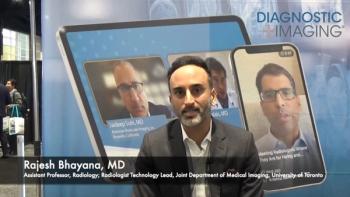
Imaging Dominates Latest Low-Value Tests List
More radiology tests found to be of low-value in the emergency room.
Five exams - including four imaging tests - have been deemed “low value” in the emergency room for certain patients, according to an article published in
Researchers from Partners HealthCare in Boston, Mass., sought to create a list of five tests, treatments, and disposition decisions, in addition to those already identified, which are of little value, are amenable to standardization, and are actionable by emergency medicine clinicians. To do so, the researchers surveyed 283 emergency medicine clinicians (physicians, physician assistants, and nurse practitioners) from six emergency departments.
A technical expert panel was assembled, which conducted a modified Delphi process to identify a top-five list using a four-step process.
- Phase 1: The researchers generated a list of low-value clinical decisions from panel brainstorming and e-mail solicitation of clinicians. They identified 64 low-value items.
- Phase 2: The panel ranked items on contribution to cost, benefit to patients, and actionability by clinicians. This narrowed the list to seven laboratory tests, three medications, four imaging studies, and three disposition decisions. All 17 items showed a significant positive correlation between benefit and actionability. One item received unanimous panel support, four received majority support, and 12 received at least one vote.
- Phase 3: The researchers surveyed all ordering clinicians from the six emergency departments regarding distinct aspects of each item.
- Phase 4: The panel voted for a final top-five list based on survey results and discussion.
The researchers developed this new top-five list:
- Cervical spine CT after trauma if patients did not meet National Emergency X-Radiography Utilization Study (NEXUS) low-risk criteria or the Canadian C-Spine Rule
- Diagnostic CT for pulmonary embolism without first risk stratifying for pulmonary embolism
- Head CT for patients with mild traumatic head injury who do not meet New Orleans Criteria or the Canadian CT Head Rule
- Lumbar spine MRI for patients with lower back pain without high-risk features
- Coagulation studies for patients without hemorrhage or suspected coagulopathy
The authors concluded that their panel identified clinical actions that were of low value and within the control of emergency department healthcare providers. “This method can be used to identify additional actionable targets of overuse in emergency medicine,” they wrote.
Newsletter
Stay at the forefront of radiology with the Diagnostic Imaging newsletter, delivering the latest news, clinical insights, and imaging advancements for today’s radiologists.




























